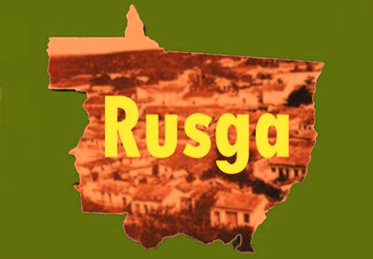That the use of science and technology was essential for the development of modern wars (conflicts that broke out in the world, especially after the advent of the Industrial Revolution, in the 18th century) is full fact. However, the fact that the same science and the same technology are able to lead humanity to extinction, until the early 1930s, was a hypothesis that was only addressed by fiction scientific. The fact is that this hypothesis started to become viable from the combination of the equations of Einstein about the theory of relativity with the experiments on radioactivity, carried out by researchers like the couple Marie and PierreCurie. The association between these two fields led a researcher, in particular, to elaborate theses on the possibility of inventing a atomic bomb. This researcher was the Hungarian Leo Szilard.
Szilard was a renowned physicist who even tried to develop extensive research, with Albert Einstein, on the home refrigeration system. However, it was the terrain of nuclear fission and the consequent release of energy from this process that attracted the Hungarian. Between 1923 and 1932, Szilard worked as a professor and researcher at the University of Berlin, Germany. Like many of his colleagues, Szilard saw the rise of Nazism in that country and decided to go to England. Szilard's departure occurred at a time when he was working intensely on the possibility of artificially manipulating the energy released by the nuclear structure of the atom, that is, achieving the “
atomic bomb secret”. As researcher P. D. Smith, in his book The men of the end of the world – the real fantastic doctor and the dream of the total weapon, on the relationship of the Hungarian physicist with Austrian physics LyseMeitner, one of those responsible for discovering the fission process of the atom:In 1932, Szilard contacted Lise Meitner at the Kaiser Wilhelm Institute for Chemistry in Dahlem about a collaboration in nuclear experiments. Although the two had worked together as professors, Meitner had doubts about whether Szilard's background in statistics and theory of probabilities accredited him as a suitable partner for the attempts she had been developing to decipher the structure of the nucleus. atomic. It's interesting to speculate on what might have happened if the two had actually started working together in 1932. In a few months, Szilard would figure out how to use the neutron to unleash the power of the atom. But at this point, with the arrival of fascism, Szilard left Germany for England. Had he remained, it is possible that Germany, not the Allies, would have discovered the secret of the atomic bomb.[1]
The rise of Nazism, however, prevented Szilard from participating in the aforementioned discovery of fission, which was made by the group of another physicist, Otto Hahn, in 1938. However, Hahn's discovery only added to Szilard's obsession with building a weapon with such technology. From England, Szilard moved to the United States, where he met the Italian Enricofermi, in Chicago, in the early 1940s. Fermi was responsible for building the first nuclear reactor, called the CP-1, a structure six meters high by eight meters wide that held 57 layers of hand-hewn graphite blocks. Each row of massive graphite followed another with perforated graphite, in which ingots of the chemical element were inserted. Uranium. Fermi's invention further excited Szilard, who began working with the Italian physicist to better manipulate atomic reactions.
Do not stop now... There's more after the advertising ;)
While developing his research, Szilard was also obsessively concerned with the development of SecondWar and with the possibility that the Nazis, who were still in the possession of some of the best European physicists of the time, managed to be the first to invent an atomic fission bomb. This hypothesis led Szilard to try to convince the US military and political authorities to develop a program to build the atomic bomb. Szilard even persuaded Albert Einstein to sign a letter with him to carry out such a program. The then president of the US, F.D. roosevelt, thought it opportune and strategic to comply with Szilard's request and authorized the creation of the program, which was named ProjectManhattan. The main coordinators of the project were the American physicist J. Robert Oppenheimer and the military Leslie Groves.
The Manhattan Project, which had the collaboration of Szilard and Fermi, managed in three years to build a large complex for exploration of ore, refinement and enrichment in a nuclear plant - all as a way of mobilizing for the construction of the bomb. For Szilard, the idea of a nuclear weapon should function as a last resort, that is, it should exist only as a possibility of use, just to demonstrate the power of destruction. The problem is that the use or non-use of a weapon like this did not depend on physicists, but on political actors. As soon as they managed to detonate the first prototype of the nuclear bomb, called "Trinity", in the desert of Los Alamos, New Mexico, US authorities have already thought of a way to intimidate the other power that has been standing out in the war, the UnitySoviet.
Even though under strong protest from Szilard, in Einstein and from other scientists, in August 1945, the United States detonated two atomic bombs on Japanese soil, one made of uranium, dropped on the city of Hiroshima, and another, based on Plutonium, in the city of Nagasaki. The dream of the “total weapon” as an expression of the triumph of science had come true, but the “monsters” that were awakened with it still haunt humanity.
GRADES
[1] SMITH, P.D. The men of the end of the world – the real fantastic doctor and the dream of the total weapon. Trans. José Viegas Son. São Paulo: Companhia das Letras, 2008. pp. 230-31.
By Me. Cláudio Fernandes


